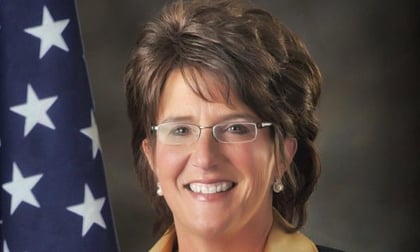The House Ways and Means Committee has endorsed H.R. 6561, a bill that could help private companies use government money to provide long-term care for people who are still living at home.
Members of the committee agreed to support the bill at a meeting Thursday, by a voice vote.
President Donald Trump’s team has blocked many of the regulations and regulation drafts developed by the administration of former President Barack Obama.
H.R. 6561 — the “Comprehensive Care for Seniors Act of 2018″ bill — would require Trump’s secretary of the U.S. Department of Health and Human Services (HHS) to complete work on one set of regulations drafted by Obama’s HHS: new rules for “Program of All-Inclusive Care for the Elderly” (PACE) plans.
(Related: Feds Update Application Process for PACE Health-LTC Programs)
The National PACE Association said in a tweet Friday that it expects H.R. 6561 to come up on the House floor for a vote this week.
If the bill becomes law and takes effect as written, it would require HHS to publish final PACE regulations by Dec. 31.
PACE Background
Medicaid can already pay for long-term care services in nursing homes for patients who meet state income and asset requirements.
Medicare can pay for home health care services for people who need long-term care, but, traditionally, “Original Medicare” and Medicare Advantage plans have not paid for the kinds of services that frail older people and older people with disabilities may need to get through the day, such as help with shopping, preparing food, cleaning their homes, and bathing.
A PACE plan can use a patient’s Medicaid and Medicare money to provide soup-to-nuts care, including personal care, chore services, home health care, dental care, podiatry services, transportation to medical appointments, outpatient care, hospital care, end-of-life care, and, when necessary, nursing home care.
Enrollees typically have to agree to let a PACE plan’s care managers manage their care and supply their providers.
Congress included a provision letting PACE plans use Medicare funding in the Balanced Budget Act of 1997. Congress also put a provision in the same act that lets a state decide whether to add PACE plans to its Medicaid program.
The requirements for setting up PACE plans have been complicated. In the past, for example, HHS has set up a small pilot program that let for-profit companies offer PACE plans. In most cases, however, PACE plan operators have had to be nonprofit organizations.
Today, 123 sponsoring organizations operate PACE centers in 31 states, according to the National PACE Association.
The PACE plans now in place serve only about 45,000 people — but the National PACE Association says that only about 2,250 of those people live in nursing homes, even though all 45,000 are eligible for nursing home benefits. The other 42,750 are still living in the community.
The Proposed Regulations
The Obama administration released a draft PACE regulation update in 2016.
The regulation would fine-tune PACE plan compliance and staffing standards.
The regulation would also set up an electronic HHS application process for organizations that want to set up new PACE plans, and it would let for-profit entities set up PACE plans.
Another provision could prohibit a PACE plan from using outside agents or brokers to market the plan, for fear that an outside agent or broker might misrepresent the nature of the plan.
HHS and the Centers for Medicare and Medicaid Services, the HHS division that oversees Medicare and Medicaid plans, often change the draft versions of regulations when preparing the final versions.
Existing PACE Competitors
Shannon Schuster, director of regulatory affairs at UnitedHealthcare, a unit of UnitedHealth Group Inc., noted in a comment letter submitted in October 2016 that UnitedHealthcare has been offering two other types of Medicare Advantage plans that already serve people who are eligible for Medicaid nursing home benefits: Medicare Advantage Institutional Special Needs Plans (ISNPs) and Medicare Advantage Institutional Equivalent Special Needs Plans (IESNPs).









 September 09, 2018 at 03:58 AM
September 09, 2018 at 03:58 AM











